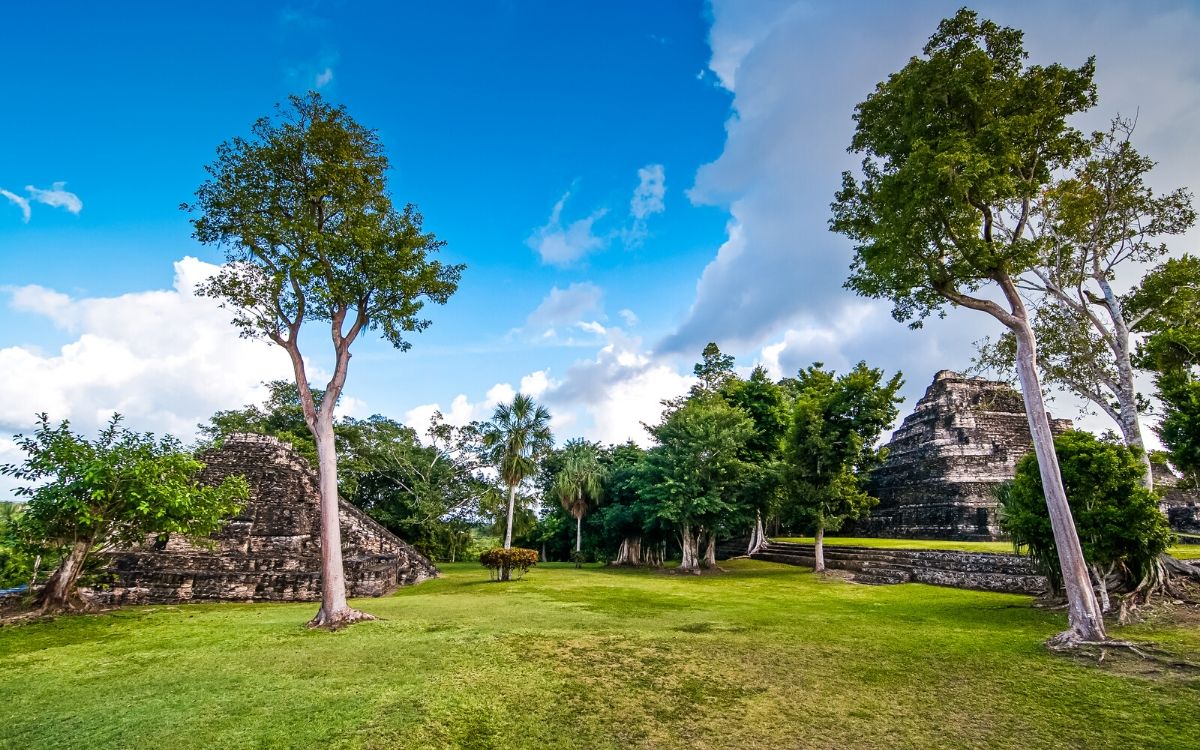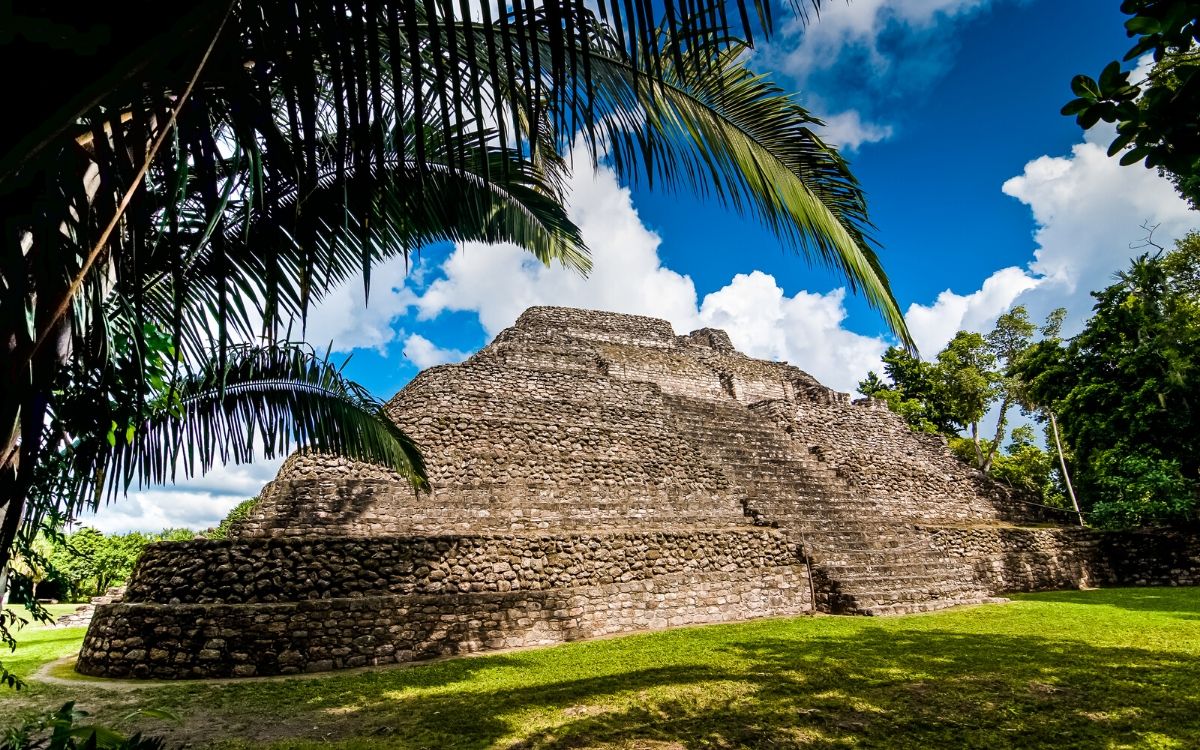One of Our Favorite Ruins and the Most Popular in the Costa Maya
A unique setting in the south makes this Mayan site worth the day trip from the Riviera Maya or a great half day trip from the Costa Maya. Chacchoben is 177 kilometers (110 miles) south of Tulum and is manageable in a day. The distance is roughly the same as Chichen Itza from the Riviera Maya. If you are traveling from the Costa Maya, it is a 50 minute drive. Chichen Itza is the most popular Mayan Ruin in the northwest and Chacchoben is the most popular Mayan Ruin in the south! So what are you waiting for? Let’s get ready for a Loco Adventure!

Fast Facts About Chacchoben
- Chacchoben is a modern Mayan name given to the site. The original name is unknown.
- It covers an area of nearly 6 square kilometers though only portions are open to the public.
- The site and structures were found by a local Mayan family in 1946, an American archeologist reported the site to the Mexican government in 1972, and excavation started by INAH in 1994.
- Two groups of structures were opened for public viewing in 2002.
- Earliest human settlements in the area of Chacchoben are suspected to be 1000B.C. though evidence points only to 200 B.C. The evidence collected during the excavations suggests that the site was abandoned and reoccupied a few times with significant dates being 360 A.D. and 700 A.D. The site seems to have been abandoned around 1000A.D.
- Climbing the pyramids is prohibited, so get your cameras out and admire these structures from the ground!
- Mayan Structures in Chacchoben
- Archaeologists believe Chacchoben was settled about 200 B.C. but the excavated buildings in Group 1-A and Group 1-B are dated from 700 A.D. Upon entrance, the first structure, Edifice twenty-four in Plaza B, is an impressive structure, but the most striking temples are located in the Gran Basamento to the west. The tallest structure on the site is labeled Temple I. Photo opportunities are located by the low structures in Plaza Las Vias, which are canopied by a forest of cohune palms and mahogany trees.
The Human Story that Surrounds Chacchoben
An understanding of the Chacchoben Ruins is not complete without the story of its discovery. In 1942 a local Mayan found the un-excavated ruins and decided to settle his family amongst the ruin mounts. He farmed the land, built his house and lived happily on the site with ancient ruins in his backyard. His children recall finding artifacts on the property as they played and recall their adventures with great emotion. In 1972, a traveling archaeologist found the family and the ruins and reported the site to the Mexican Government. The Mayan family understood that they could not own the land they had been living on for 3 decades and assumed the official title of Honorary Guard for the site. In 1994, INAH began excavation of the ruins which is now enjoyed by a large number of tourists daily. The Mayan family still lives close to the ruins and their house remains on the ruin site.

Why We Love Chacchoben
This site is historically rich with a wonderful twist. Located in the Lake Region of southern Quintana Roo, the trees, birds, monkeys and more are as interesting as the ruins. The landscape changes in this region and provides visitors a great lesson in indigenous vegetation that has impacted and been a part of Mayan life. Chacchoben proves that the life of the Maya is delicately intertwined with its environment.
Getting To Chacchoben
When traveling from the Riviera Maya or Costa Maya, take Hwy 307 to Hwy 293. The Chacchoben archeological site is located just 3 km north-west of Lazaro Cardenas, not near the village of Chacchoben. Once you drive through Lazaro Cardenas you will see the ruins on the west side of the road. It is easy to mix up the village and the ruin site. We did the first time we visited!
The site is open from 8:00am-5:00pm, Monday thru Sunday. It is important to note; cruise ships docked at the Costa Maya Port in Mahahual include Chacchoben in their excursions. As we said earlier, Chacchoben is as popular as Chichen Itza though the site is very different from Chichen Itza. Arrive early or wait until the late afternoon to avoid crowds and have this Mayan ruin site to yourself. The less people at the site, the more monkeys and birds you will see!
Update 2015 – We recently visited this site in 2015 and loved it as much as our first few visits. When driving to the ruin site, take full advantage of the pineapple ladies who sell whole and cut pineapple at the topes before you reach the turn off to the ruins. For 10 pesos a bag of pre-cut pineapple or 40 pesos for an entire pineapple, you will experience some of the best pineapple found anywhere. It is called honey pineapple for a reason! When we arrived to the ruins, we were happy to hear and see the local monkeys. They provided a great show for us and we loved seeing them again.
